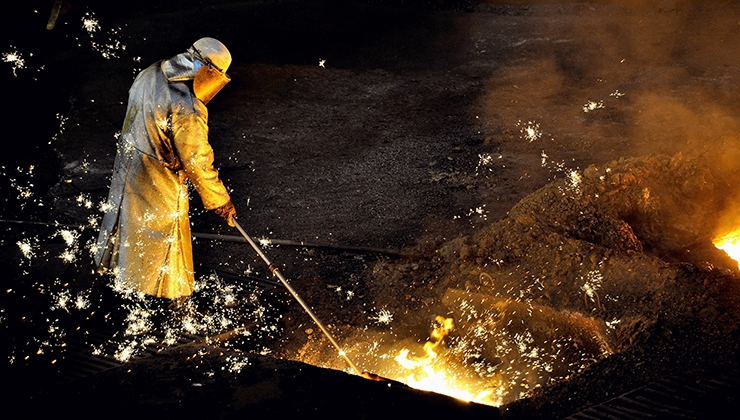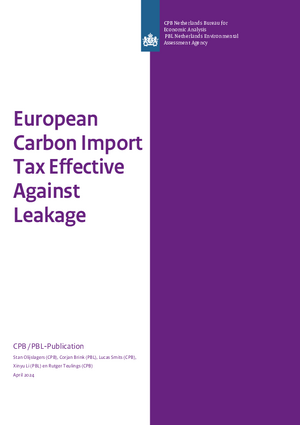European Carbon Import Tax Effective Against Leakage

Downloads
The study shows that the EU ETS will reduce emissions from European industry and power generation by 670 megatons by the year 2035. With the current policy of free allowances, 28 percent of this emission reduction leaks away, mainly due to the relocation of production to outside the EU. This phenomenon is known as carbon leakage. After introducing CBAM, only 17 percent of the reduced European carbon emissions are still emitted outside the EU. CBAM works better to prevent leakage because production outside the EU is often more polluting than inside the EU. With the introduction of CBAM, 'climate-unfriendly' imports from outside the EU become relatively more expensive than products made within the EU. This increases the demand for relatively clean European products and reduces carbon leakage.
More production in the Netherlands and EU with CBAM
The study also shows that production in Europe and thus intra-EU trade increases as a result of CBAM. This does vary by sector. For example, steel and cement production in the EU increases because European industry has a relatively low emission intensity compared to countries outside the EU. Aluminum production does not increase because of CBAM, because the emissions associated with aluminum production mainly take place in the production of electricity. These indirect electricity emissions are not included under CBAM. Because the CBAM sectors in the Dutch industry are already oriented more than average towards the internal EU market, Dutch exports increase relatively strongly compared to other EU countries.
New GREEN-R model
For the analysis, CPB and PBL used the new GREEN-R model: a dynamic general equilibrium model to simulate climate and energy policies. The model covers the entire world, making it possible to estimate the effects of climate policies in one region on emissions in the rest of the world. This model analysis does not take into account local bottlenecks, such as tight labor markets or environmental and nitrogen regulations.
From free allowances to CBAM
Because of the European Emissions Trading System, which requires companies that emit a lot of CO2 to buy emission allowances, and the high price on CO2 emissions, European companies are at a competitive disadvantage. To compensate for this and prevent companies from leaving the EU, companies that are sensitive to international competition get a large portion of emission allowances for free. From 2026 to 2034, these free allowances will gradually be replaced by the Carbon Border Adjustment Mechanism (CBAM). This means that from 2026, European companies that import products from outside the EU that release high levels of CO2 emissions will have to pay an import tax. The import tax will apply to six product groups: cement, aluminum, fertilizer, electricity, hydrogen, iron and steel, and products derived from them, such as screws and bolts. This should prevent companies from moving production to countries outside the EU where CO2 emissions are not priced (carbon leakage).
Authors


